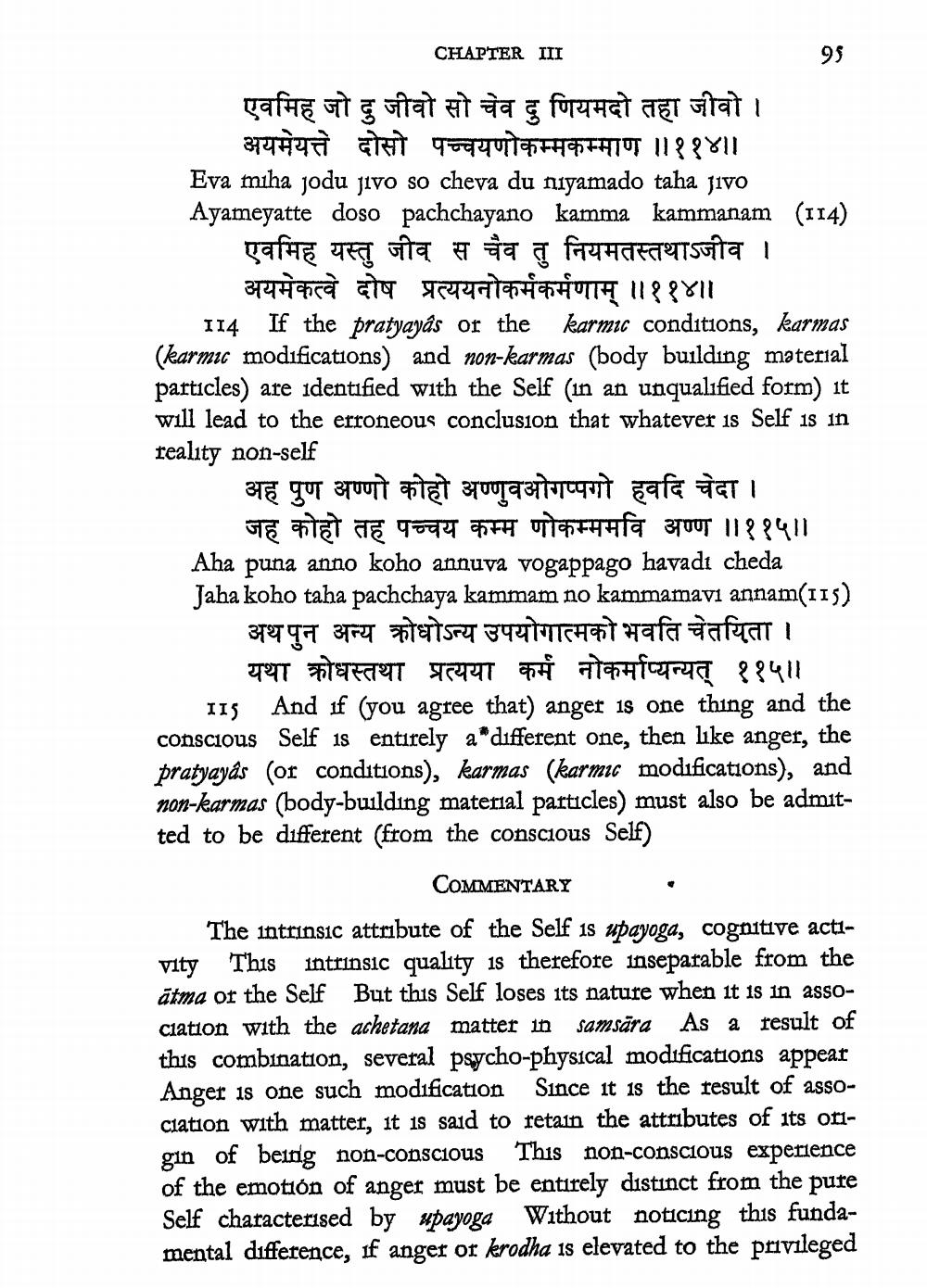________________
95
CHAPTER III एवमिह जो दु जीवो सो चेव दुणियमदो तहा जीवो।
अयमेयत्ते दोसो पच्चयणोकम्मकम्माण ॥११४॥ Eva miha jodu jivo so cheva du niyamado taha jivo Ayameyatte doso pachchayano kamma kammanam (114)
एवमिह यस्तु जीव् स चैव तु नियमतस्तथाऽजीव ।
अयमेकत्वे दोष प्रत्ययनोकर्मकर्मणाम् ॥११४॥ 114 If the pratyayâs or the karmic conditions, karmas (karmic modifications) and non-karmas (body building material particles) are identified with the Self (in an unqualıfied form) it will lead to the erroneous conclusion that whatever is Self is in reality non-self
अह पुण अण्णो कोहो अण्णुवओगप्पगो हवदि चेदा ।
जह कोहो तह पच्चय कम्म णोकम्ममवि अण्ण ॥११५॥ Aha puna anno koho annuva vogappago havadı cheda Jaha koho taha pachchaya kammam no kammamavi annam(115)
अथ पुन अन्य क्रोधोऽन्य उपयोगात्मको भवति चेतयिता।
यथा क्रोधस्तथा प्रत्यया कर्म नोकर्माप्यन्यत् ११५॥ II And if (you agree that) anger is one thing and the conscious Self is entirely a*different one, then like anger, the pratyayas (or conditions), karmas (karmic modifications), and non-karmas (body-building material particles) must also be admitted to be different (from the conscious Self)
COMMENTARY The intrinsic attribute of the Self is upayoga, cognitive activity This intrinsic quality is therefore inseparable from the ātma or the Self But this Self loses its nature when it is in association with the achetana matter in samsāra As a result of this combination, several psycho-physical modifications appear Anger is one such modification since it is the result of association with matter, it is said to retain the attributes of its origin of being non-conscious This non-conscious experience of the emotion of anger must be entirely distinct from the pure Self characterised by wpayoga Without noticing this fundamental difference, if anger or krodha is elevated to the privileged




